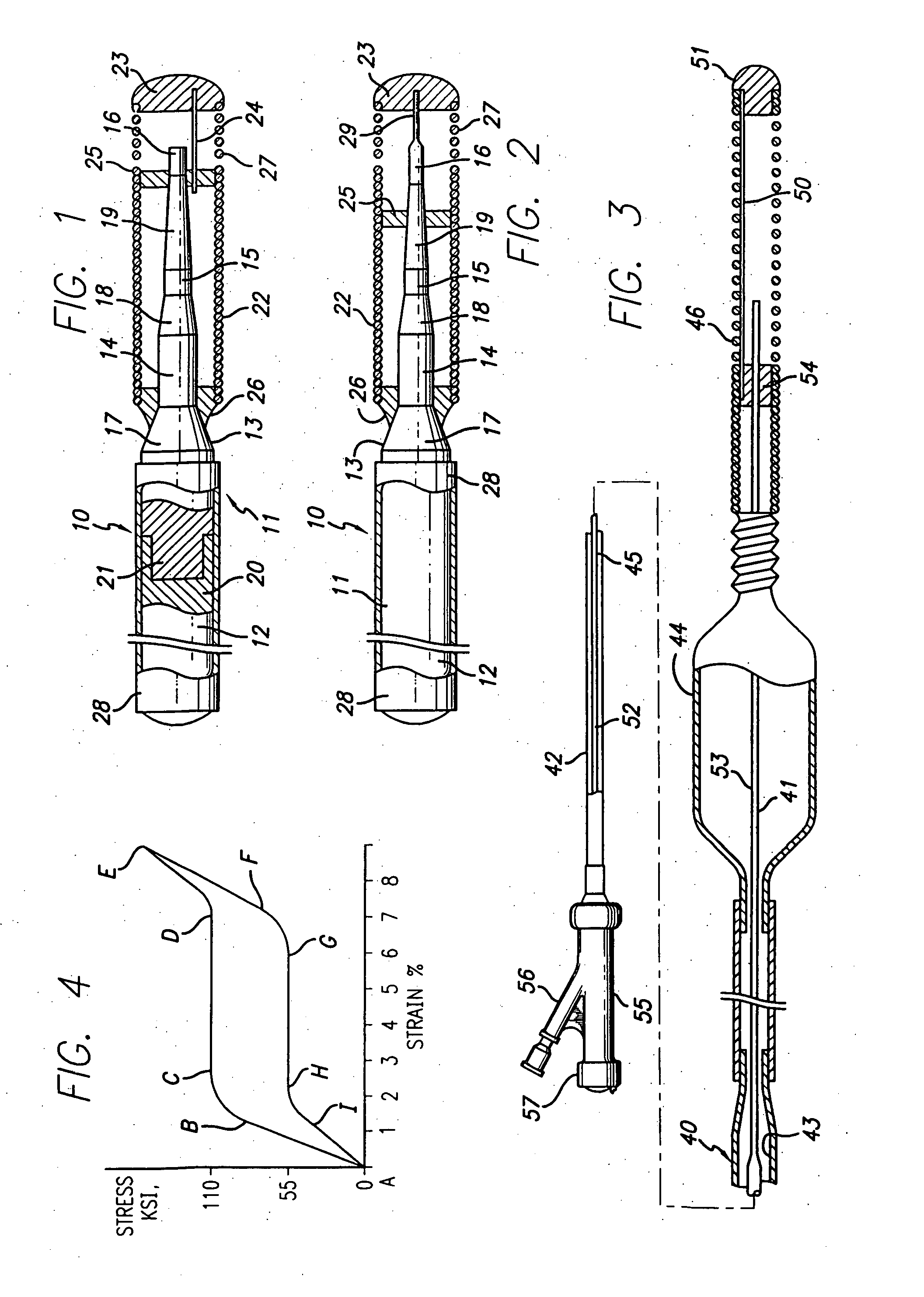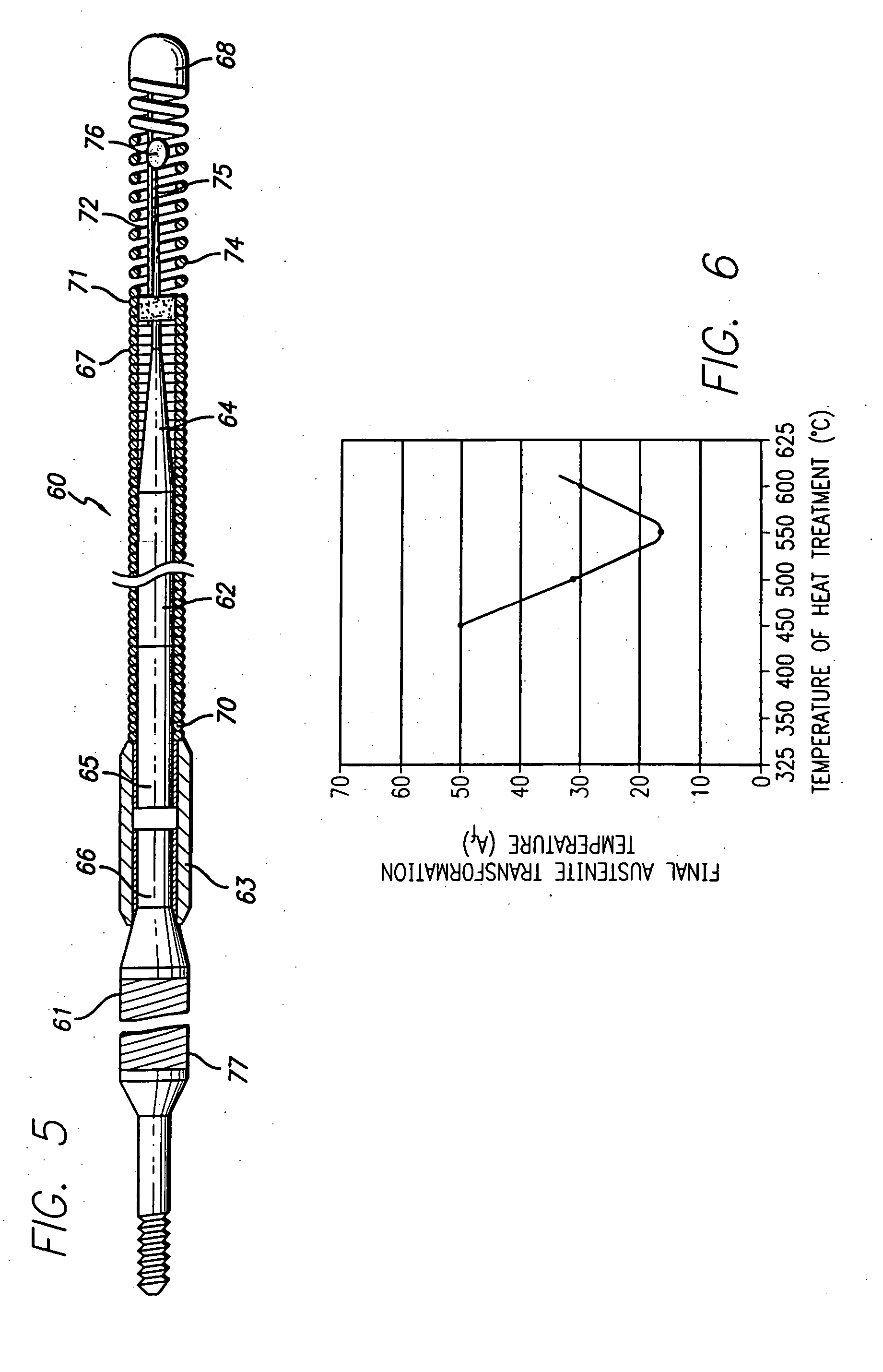Superelastic guiding member
a superelastic and guiding member technology, applied in the field of medical devices, can solve the problems of specimen occurrence, alloy becomes too brittle to fabricate by cold working, etc., and achieve the effects of uniform residual stress in the material, one-to-one torque response, and adequate ductility
- Summary
- Abstract
- Description
- Claims
- Application Information
AI Technical Summary
Benefits of technology
Problems solved by technology
Method used
Image
Examples
Embodiment Construction
[0030]FIG. 1 illustrates a guidewire 10 embodying features of the invention that is adapted to be inserted into a body lumen such as an artery. The guidewire 10 comprises an elongated body or core member 11 having an elongated proximal portion 12 and a distal portion 13, at least part of which, preferably the distal portion, is formed of superelastic material of the invention. The distal portion 13 has a plurality of sections 14, 15 and 16 having sequentially smaller diameters with tapered sections 17, 18 and 19 connecting the smaller diameter sections with adjacent sections. The elongated proximal portion 12 is provided with a female distal end 20 which receives the male end 21 of the distal portion 13. The ends 20 and 21 may be press fit together or may be secured together by means such as a suitable adhesive or by welding, brazing or soldering.
[0031] A helical coil 22 is disposed about the distal portion 13 and has a rounded plug 23 on the distal end thereof where the distal end...
PUM
| Property | Measurement | Unit |
|---|---|---|
| pressures | aaaaa | aaaaa |
| ultimate elongation at failure | aaaaa | aaaaa |
| ultimate tensile strength | aaaaa | aaaaa |
Abstract
Description
Claims
Application Information
 Login to View More
Login to View More - R&D
- Intellectual Property
- Life Sciences
- Materials
- Tech Scout
- Unparalleled Data Quality
- Higher Quality Content
- 60% Fewer Hallucinations
Browse by: Latest US Patents, China's latest patents, Technical Efficacy Thesaurus, Application Domain, Technology Topic, Popular Technical Reports.
© 2025 PatSnap. All rights reserved.Legal|Privacy policy|Modern Slavery Act Transparency Statement|Sitemap|About US| Contact US: help@patsnap.com



